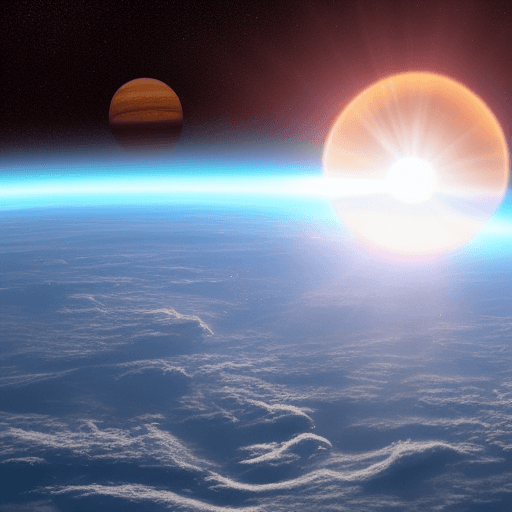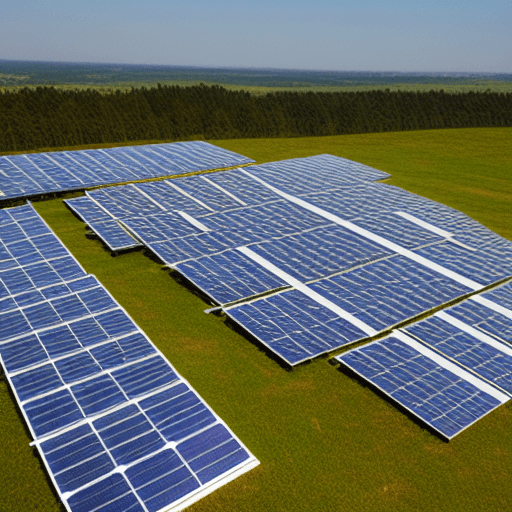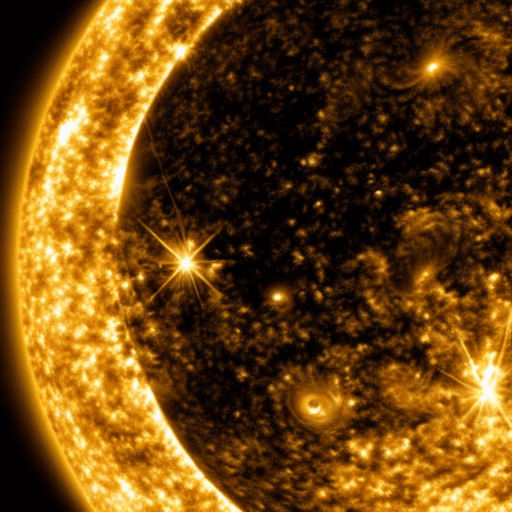How does the sun produce energy?
The sun is one of the most important objects in our solar system.
It provides light and heat for Earth, and it is also responsible for producing energy.
Solar energy is a renewable resource, which means that it can be used over and over again.
Let’s go step-by-step describing how the sun produces energy and some of the benefits of using solar energy from the sun.

The sun produces energy through nuclear fusion.
Explain It To A Child
The sun produces energy through nuclear fusion. This is when smaller atoms join together to form a larger atom. This process releases a lot of energy in the form of heat and light.
Nuclear fusion is the process by which two or more atomic nuclei come together to form a new atomic nucleus. This releases vast amounts of energy, which is why nuclear fusion is used to power stars like our sun.
Inside the core of the sun, the pressure and temperature are so high that hydrogen atoms can fuse together to form helium atoms. This process releases lots of energy, which makes the sunshine.
How does the sun produce energy?
The sun produces energy through nuclear fusion.
This is when smaller atoms come together to form a larger atom. This process releases a lot of energy in the form of heat and light.

- The sun is uniquely placed to be the centerpiece of our solar system because it produces its own energy. The sun produces energy through nuclear fusion.
- Nuclear fusion is taking place, and hydrogen atoms are being fused together to form helium atoms.
- This process releases a tremendous amount of energy in the form of heat and light.
- The sun produces energy through nuclear fusion, which generates an immense amount of heat and light that fuels our planet’s ecosystems.
How much energy does the sun produce per day?
The sun is one of the most powerful sources of energy in the universe.
Every day, it produces enough energy to power the entire world for an entire year.

In fact, the sun produces so much energy that it could power the world for billions of years. And yet, we only use a tiny fraction of this energy.
The sun produces around 400 trillion watts of energy every day.
That’s enough to power trillions of homes, or to run all of the world’s industries. And yet, we only use a tiny fraction of this energy.
So how much energy does the sun produce per day? The answer is more than we could ever possibly use.
Which reaction creates most of the energy released by the Sun?

The majority of the energy released by the Sun comes from nuclear fusion reactions.
In these reactions, two hydrogen atoms fuse together to form a helium atom, releasing a large amount of energy in the process.
Fusion reactions are constantly taking place in the Sun’s core, where conditions are incredibly hot and dense.
As a result, the Sun produces a tremendous amount of energy that helps to keep our planet warm and habitable.
While fusion reactions are responsible for most of the Sun’s output, it is also worth noting that a small amount of energy is produced through nuclear fission reactions.
In these reactions, heavier elements are split apart, releasing energy in the process.
However, fission reactions play a relatively minor role in the Sun’s overall energy budget.
What is nuclear fusion and how does it work
Nuclear fusion is a process that releases energy by combining atoms.
This happens when the nuclei of two atoms join together to form larger nuclei. When this happens, there is a release of energy.
Nuclear fusion can only take place at extremely high temperatures.
The sun is an example of nuclear fusion. The sun’s core temperature is around 27 million degrees Fahrenheit.
At these temperatures, the nuclei of hydrogen atoms combine to form helium atoms.
This process releases huge amounts of energy in the form of sunlight and heat.
Nuclear fusion is the process that powers stars.
Scientists are trying to harness the power of nuclear fusion here on Earth. They believe it could be used as a clean and renewable source of energy.
However, it has proven difficult to recreate the conditions necessary for nuclear fusion on Earth.
The benefits of using solar energy
Solar energy is one of the most abundant and sustainable resources on the planet.
It can be used to generate electricity, heat water, and power homes and businesses.
Solar energy is a clean and renewable resource that can help to reduce our reliance on fossil fuels.
Additionally, solar energy can provide significant financial savings.
In fact, the cost of solar panels has fallen by more than 70% in the last decade, making it an increasingly affordable option for homeowners and businesses alike.
Solar energy is also incredibly versatile.
It can be used in remote locations where other power sources are not available, making it an ideal solution for communities in developing countries.
With so many benefits, it’s no wonder that solar energy is one of the fastest-growing forms of renewable energy in the world.
Thus, the sun produces energy through nuclear fusion.
This process is important because it allows the sun to shine and also provides renewable energy for us to use.
